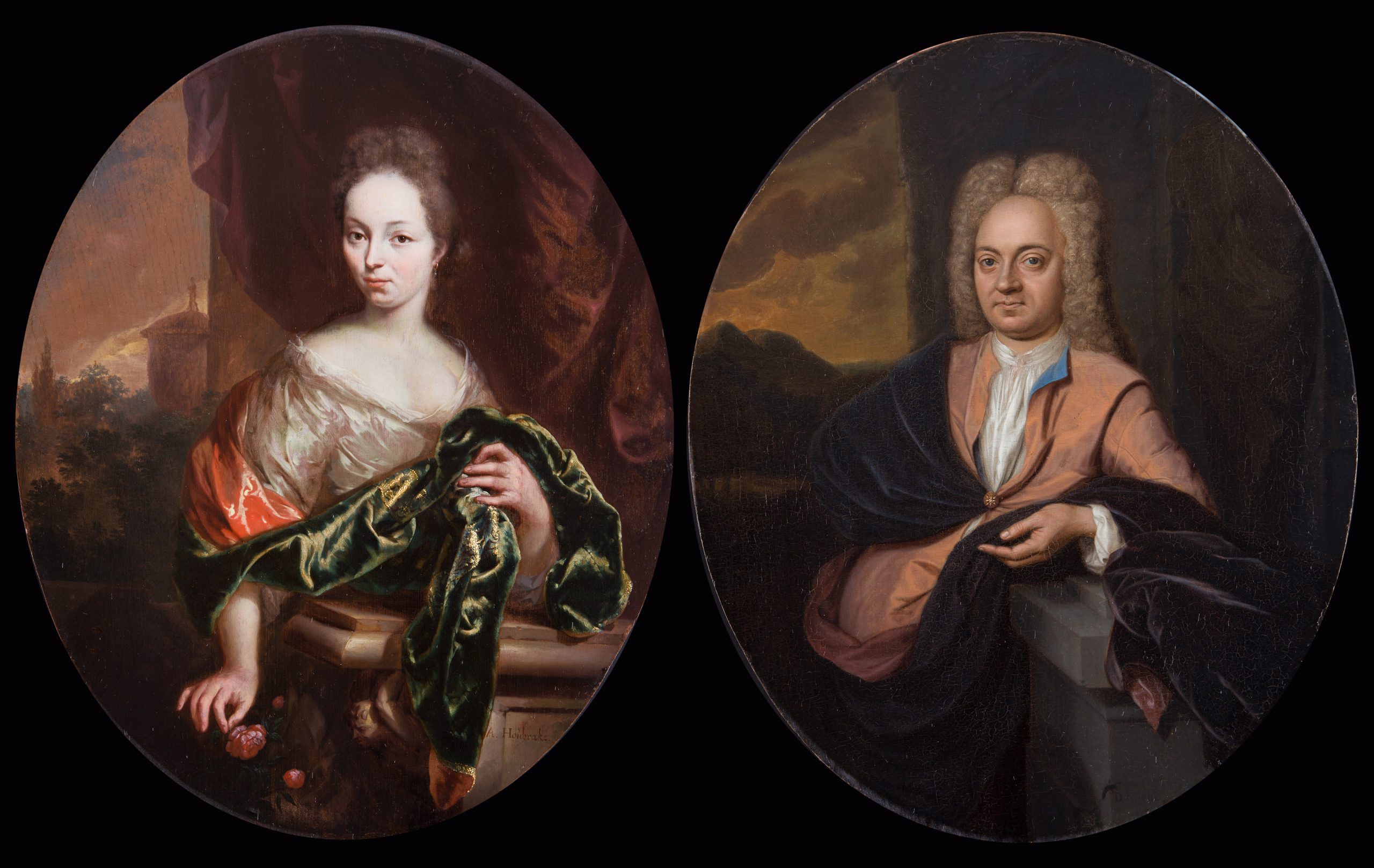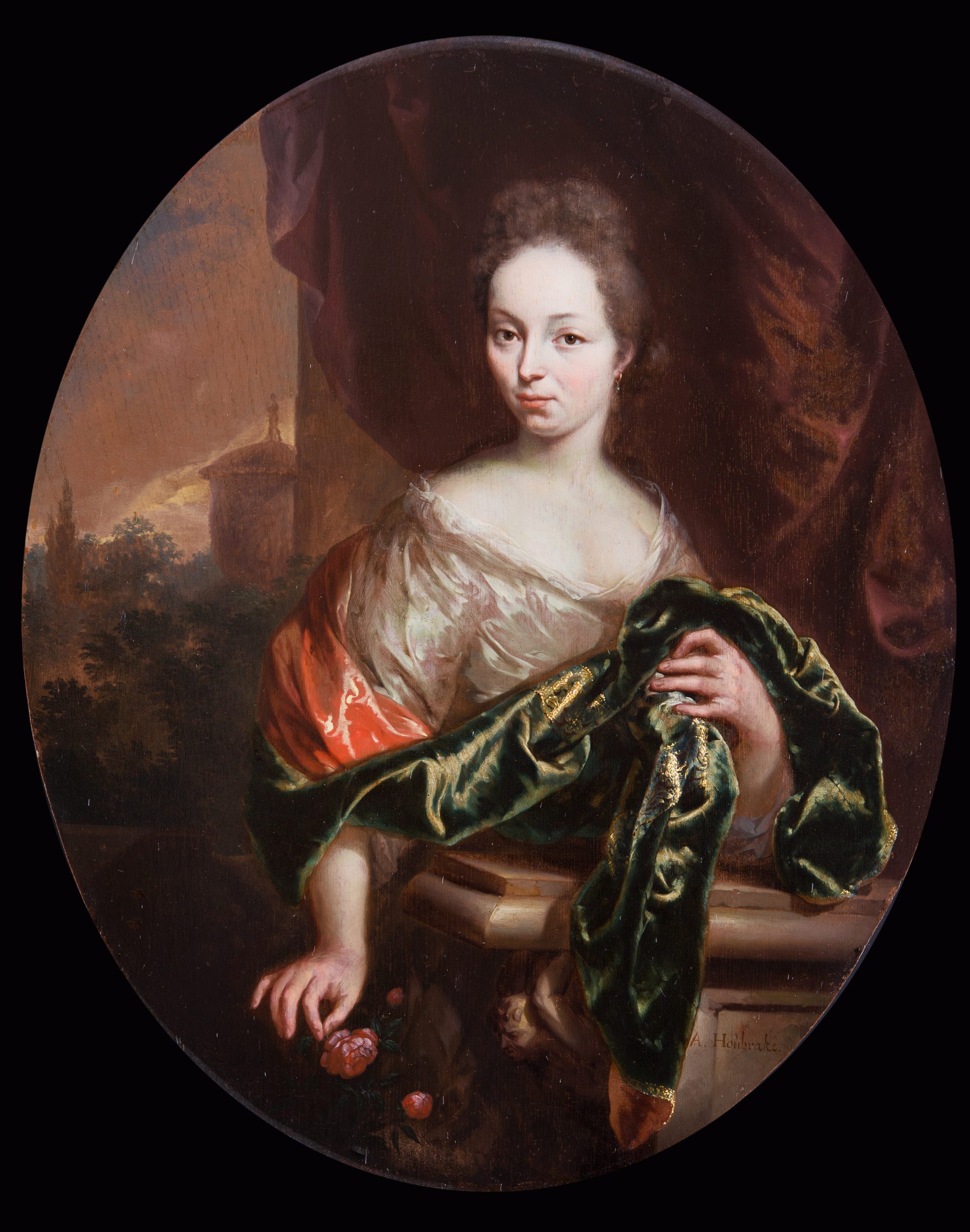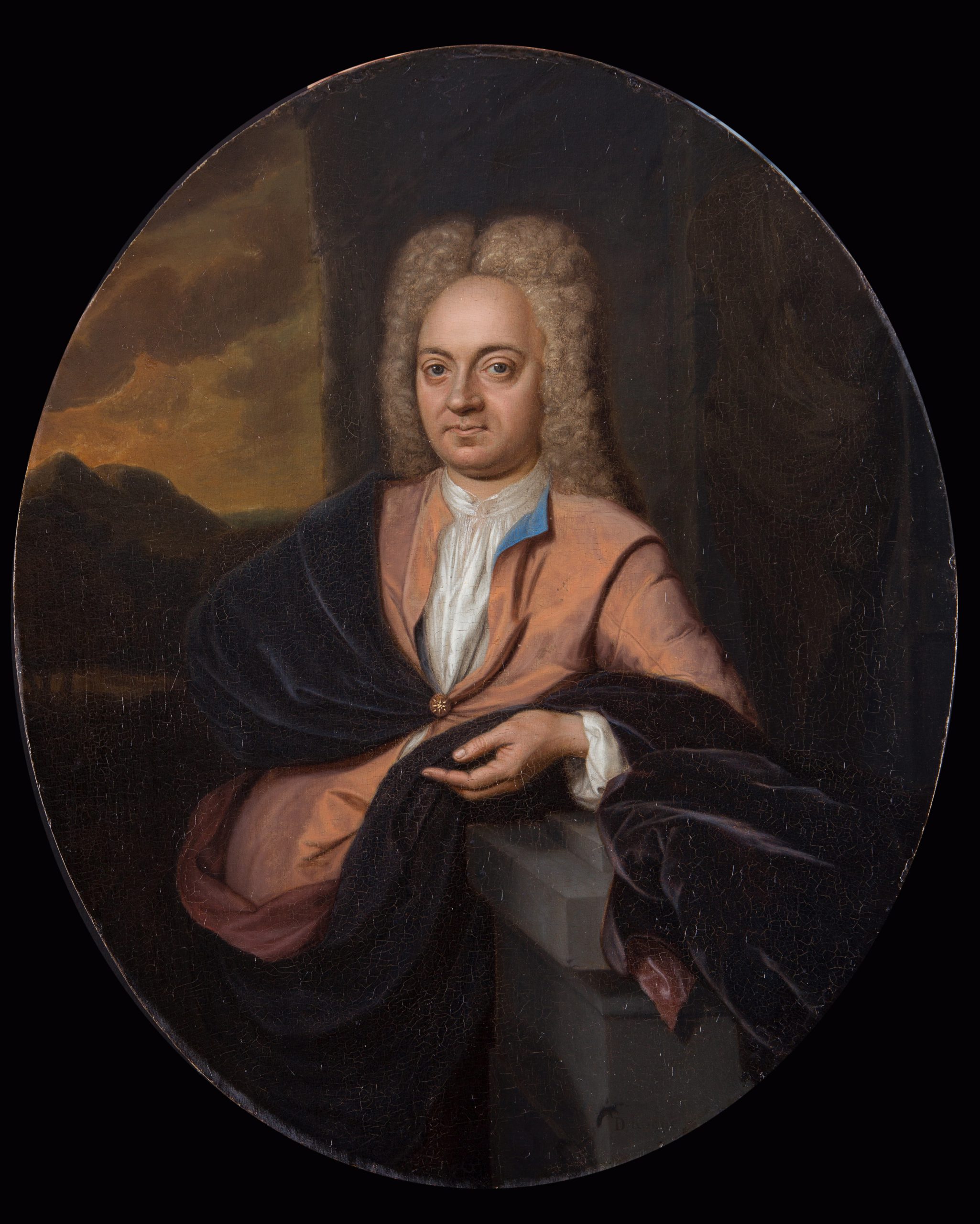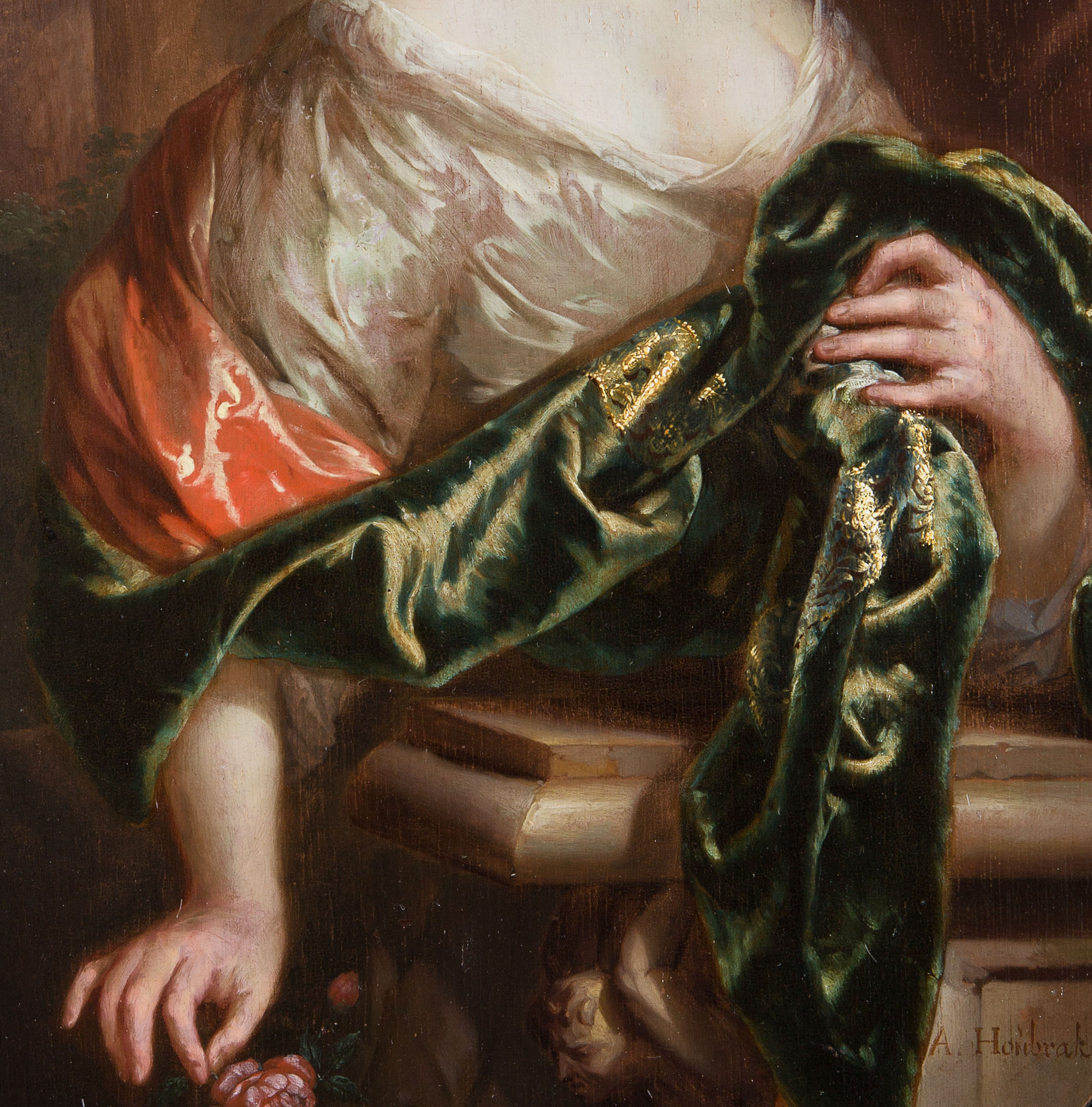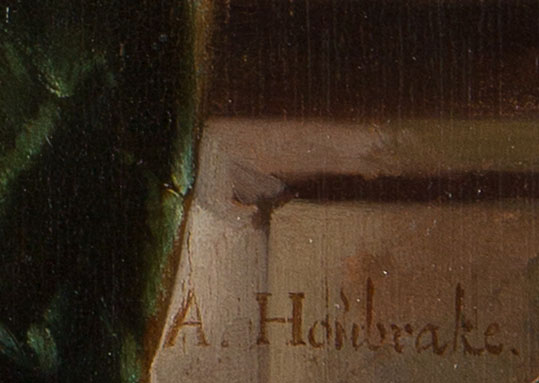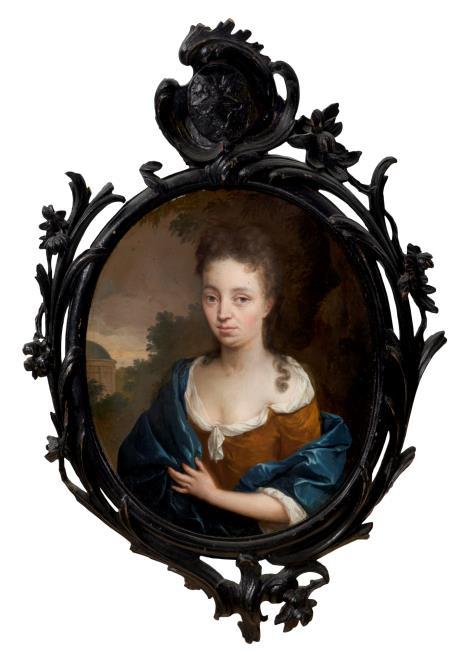Arnold Houbraken (Dordrecht 1660 – 1719 Amsterdam) and D. Koene (Middelburg, active first half 18th century)
Arnold Houbraken (Dordrecht 1660 – 1719 Amsterdam)
Portrait of Catharina van Elsdijk (b. c. 1680)
Oil on panel, oval, 43 x 34.5 cm
Signed ‘A. Hoùbrake.’ (lower right)
D. Koene (active Middelburg first half 18th century)
Portrait of Jacobus Berdenis (b. Vlissingen 1673)
Oil on panel, oval, 43 x 34.5 cm
Signed ‘D. KOENE’ (lower right)
Both contained in carved and gilt oval frames crowned with Neoclassical ribbons, probably dating c.1900
Provenance
Willem Jan Kruseman (1849–1918), Middelburg, and by descent until 2014; private collection, The Netherlands
***
Arnold Houbraken was born in Dordrecht on 28 March 1660 and was taught the art of painting by Jacobus Levecq and Samuel van Hoogstraten.1 Around 1709 he and his family moved to Amsterdam, where he had found a wealthy Maecenas. Although in Dordrecht he had mostly painted portraits, in the cultural climate of Amsterdam Houbraken was able to concentrate on mythological subjects, painted in a refined academic manner, which were highly esteemed during the period and the ultimate test of a painter’s ability. Houbraken is best known today for his Groote Schouburgh der Nederlantsche konstschilders en schilderessen, which appeared in print between 1718 and 1721 – it remains the most important source of biographies of artists of the Dutch Golden Age.
The portrait of Catharina van Elsdijk is likely to have been painted by Houbraken around 1700-1705. She married the Middelburg merchant Jacobus Berdenis on 12 December 1707 and then moved to Zeeland. Catharina must have brought her portrait, whose dimensions and size served as the model for the companion piece of her husband, which was painted by the local artist D. Koene, about whom little is known, not even his Christian name.2 As the portrait of Catharina was intented as a stand-alone work, rather than part of a set of pendants, this explains why the sitters are not facing eachother, which would have been more usual for pendants painted by the same painter. It is interesting to see how Koene tried to emulate the style of Houbraken, but it is obvious he did not reach this master’s elegance and refinement. Nevertheless, the portraits work very well together.
The couple had a daughter, Cornelia Berdenis (1710-1787), who married Daniel van Berlekom (1693–1769), through whose family the two portraits are likely to have descended. They remained in family ownership until 2014. The portrait of Catharina can be compared to Houbraken’s portrait of Josina van Loon (1674–1736), dated 1701, which is preserved in the Van Loon Museum in Amsterdam.3
Seen by E.W. Moes and documented under no. IB 12557 in the Iconografisch Bureau, The Hague.
SOLD
1. For the artist, see: B. Cornelis, ‘A reassessment of Arnold Houbraken's Groote Schouwburgh’, Simiolus 23 (1995), p. 163-180.
2. Three other potraits by Koene were offered at Christie’s, Amsterdam, 2 December 1987, lots 40 and 41, repr.
3.Oil on copper, 21.5 x 18 cm; inv. no. 2579; E.W. Moes, Iconographia Batava, Amsterdam 1897–, no. 4609.
